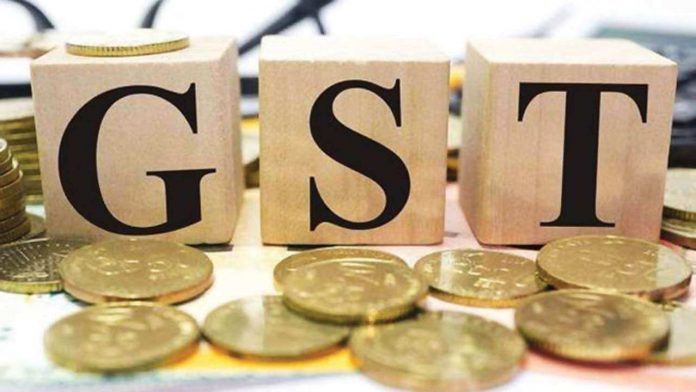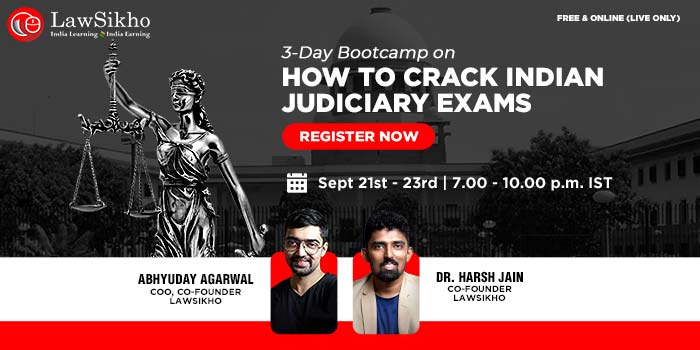

This article has been written by Nimisha Dublish of Vivekananda Institute of Professional Studies, GGSIPU, Delhi. The article aims to explain the GST Amendment Act along with the amendments made and suggested by the GST Council of India.
This article has been published by Sneha Mahawar.
Table of Contents
Before 2017, India was a country where there were several direct and indirect taxes imposed on its citizens. The payment of several indirect taxes makes it a hectic process for each individual involved in regular economic activities. The Goods and Services Tax (GST) was introduced to address this issue and close the possible loopholes in the tax system. To bring down corruption, the Goods and Services Tax (GST) was introduced. It brought the Indian market under the umbrella of 1.3 billion citizens. The solo indirect tax of GST brought and subsumed several taxes like Value Added Tax (VAT), Excise Duty, Central Sales Tax (CST), etc. into one single tax. The establishment and introduction of GST was one of the biggest game changers for businessmen and manufacturers and helped them eliminate the tedious process of filing multiple taxes. Along with this reduction of tax evasion and corruption by adopting one tax regime i.e., GST helped bring more tax collection transparency. As a result, enhanced and increased government revenue by widening the tax base and Gross Domestic Product (GDP).

However, there remained many problems that the manufacturers and businessmen faced. Some of these were related to the GSTN Portal, filing of monthly returns, GST slabs, etc. People managed to find loopholes and new methods of tax evasion, which in turn decreased the government’s revenue. In this article, we will be going through the history and constitutional amendments made to the Act. We will be discussing the GST Council and the power it holds in GST-related matters.

Vishwanath Pratap Singh, Finance Minister in Rajiv Gandhi’s government, initiated the reform of the indirect tax regime in the year 1986. The regime started with certain modifications to the Value Added Tax, and hence the Modified Value Added Tax (MODVAT) was introduced. Further, Finance Minister Manmohan Singh, under the leadership of P.V. Narasimha Rao, initiated state-level discussions on VAT. Consequently, the Goods and Services Tax (GST) Bill was proposed in 1999 and was given the go-ahead by then Prime Minister Atal Bihari Vajpayee along with former RBI governors Bimal Jalan, I.G. Patel, and C. Rangarajan. In order to design the GST model, a committee was set up, which was headed by West Bengal’s Finance Minister, Asim Dasgupta.
In 2002, the Prime Minister formed a task force for the recommendation of tax reforms. As suggested in the 12th Finance Commission, the Committee recommended the rollout of GST. The newly elected Finance Minister, P Chidambaram, proposed to roll out GST in the year 2010. The 115th Constitution Amendment Bill was introduced by the United Progressive Alliance (UPA) in 2011 to bring in the GST. However, it was opposed and then recommended to the Standing Committee led by the BJP’s former Finance Minister, Yashwant Sinha.
In 2014, the bill was reintroduced and it got the majority of votes under the BJP government. In 2015, a final deadline for the year 2017 was set by Arun Jaitly. However, the Constitution Amendment Bill faced critical opposition as well, but in 2016, it was finally passed and President Pranab Mukherjee gave his assent. The GST Council approved the Central Goods and Services Tax (CGST) Bill, Integrated Goods and Services Tax (IGST) Bill, Union Territory Goods and Services Tax (UTGST) Bill, and Goods and Services (Compensation to States) Bill, which were passed by the Lok Sabha on 29 March 2017. Subsequently, the Rajya Sabha also passed the bills on 6th April, 2017 and was enacted on 12th April, 2017.
After proper enactment of all the laws, the (GST) was launched nationwide on 1st July 2017. At midnight of 1st July 2017, the President and Prime Minister collectively launched the GST. The Goods and Services Tax (GST) subsumed 17 central and state taxes and created the market for a $2.4 trillion economy with 1.3 billion citizens under one common umbrella. More than 160 countries worldwide have implemented GST. India adopted a dual GST system while many countries have a single GST system. GST was introduced with the slogan of “One Nation, One Market, One Tax”.

Constitution (101st Amendment) Act, 2016 was introduced to make amendments in the Constitution of India for GST. Since the tax was to be levied on both a central and state basis, it was necessary to introduce constitutional amendments to maintain consistency across the centre and state.
Certain articles were amended and altered in order to suit the provisions of GST legislation. The applicability and scope of GST laws were introduced, along with the delineation of powers to make GST laws. The constitution defined the powers and duties of the GST Council of India. The following were the major changes as per the Amendment Act.
Insertion of Article 246A of the Constitution of India gave powers to the State and Union Legislatures, along with Parliament, to make and amend GST laws as imposed by them. Parliament is given a special power over the states to make laws as per inter-state supplies. The IGST Act deals with the inter-state supplies of the country. Petroleum crude, high-speed diesel, motor spirit, natural gas, and aviation turbine fuel were excluded from the article till the time recommended by the GST Council.
Article 269A of the Constitution of India describes the manner of revenue distribution from inter-state supplies between the centre and state. The GST Council is empowered to frame the rules in this regard. IGST is levied on import transactions. With the help of IGST, taxpayers are enabled to avail of the IGST credit which is paid on imports through the supply chain. This was not possible before the enactment of GST laws.
Article 270 majorly deals with the distribution of revenues between the Union and states. After the amendment of this Article, certain new clauses were inserted. Sub-Clause 1(A) and 1(B) were inserted after the amendment. Article 270(1A) says that the tax collected by the Union as per Article 246(A)(1) is to be distributed between the Union and States as prescribed in clause 2 of the said Article. Article 270(1B) was introduced to make sure that a certain amount of tax as mentioned in the Article should also be distributed between the Union and States in the same manner as provided under clause 2.
The powers of the GST Council are given under Article 279A of the Constitution of India. The GST Council comprises a joint forum of the Centre and States formulated by the President of India. The GST Council works for the enactment, procedures, modifications, and procurement of laws related to GST.
The Article says that the President shall constitute a GST Council within 60 days from the date of commencement of the Act. The composition of the GST Council is as follows:
The Article further provides with the functions performed by the GST Council. The Council can make recommendations to both the union and the states on the following issues and matters:

The Council can make a mechanism for the purposes of dispute resolution as per the recommendations of the Council and implement it. The mechanism can be built between the government and one or more states; between the government and any state or states on one hand and one or more states on the other; or between two or more states.
Article 286 restrains the states from making laws for the imposition of any kind of tax, either on the sale or on purchase of goods. After the amendment of this Article, the words ‘sale or purchase’ were replaced with the word ‘supply’ and the word ‘goods’ was replaced by the words ‘ goods or services or both’. As stated, the states have no authority with respect to the imposition of GST on inter-state supplies of goods and services or both. The same shall be levied by the Union Government under Article 269A as per the Amendment Act.
The definition of ‘Goods and Services Tax (GST), Services and State’ was included in Article 366 by way of an amendment to the Constitution of India.
The Goods and Services (Compensation to States) Act, 2017 included a provision to give relief to the states if they face revenue loss due to the enactment of GST. However, it had a validity of only 5 years from enactment.
The Sixth Schedule was amended and certain provisions were inserted for the administration of the tribal areas in the states of Assam, Mizoram, Meghalaya and Tripura. After the amendment of the schedule, the district council is given power to levy and collect taxes. Taxes on professions, trades, callings, and employment were also levied. The schedule also dealt with the administration of taxes with respect to animals, vehicles, and boats.
The seventh schedule of the Constitution contains three lists. The lists deals with the matters as provided under the heads of Union, state and concurrent.
Amendments to this schedule were made in order to pass certain entries related to the duties of excise, the sale of petroleum, high speed diesel, motor spirit, natural gas, etc.
Amendments to the CGST Act, 2017 took place, which was to be applicable from 1st January 2022. The following were the amendments that took place:
Section 16(2) of the Act was amended and a new clause (aa) was inserted. The said clause stated that only those suppliers who have given details of the invoice in the form GSTR- 1 would be eligible to claim the ITC of the same. The communications to the recipient should be mentioned in form GSTR- 2A or GSTR- 2B is still ambiguous.
Section 73 and Section 74 of the Act deal with this matter. Any proceedings that are undertaken with respect to Section 129 and Section 130 shall be independent and separate. Section 129 deals with the E-Way Bill, and Section 130 discusses the non-compliance provisions. For example, if the action has been initiated in relation to the violation of the E-Way Bill, then the same shall be continued and considered as independent proceedings from the other matters.
An explanation of the definition of tax details has been inserted in Section 75 of the Act. Tax details that have been provided by the supplier shall be treated as Self Assessed Tax only in the form GSTR- 1. This insertion has imposed restrictions on the malpractice that has been followed to escape the tax liability.
Section 83 of the Act discusses the required provisional attachment for the purpose of protecting the revenue in certain cases. After the amendment, the power of provisional attachment of property under Section 83 has expanded. The powers have been expanded to include proceedings that are undertaken under Chapter XII, Chapter XIV, or Chapter XV of the Act. Chapter XII deals with assessment; Chapter XIV deals with inspection, search, seizure and arrest and Chapter XV deal with demands and recovery.
Under Section 107 of the Act, the taxpayers are to pay 25% of the penalty as a part of the pre-deposit. This is applicable in cases where an appeal has been filed for detention, seizure of goods, or conveyance.
Section 129 of the Act dealt with the detention, seizure, and release of goods along with conveyances in transit. Changes have taken place in the procedures after the amendment Act. A penalty of 200% of tax has been imposed and it shall be payable when the owner of the goods comes forward for the payment of said penalty. Earlier, the rate was 100% and now it has been increased to 200% of the tax. In case the good’s owner doesn’t come up then the same shall be released after making a payment of 50% of the value of goods or 200% of tax payable. Earlier, there was an option to furnish the security or the bond for releasing goods, which has now been removed.
Both Section 129 and Section 130 dealt with the procedures and penalties associated with the confiscation of goods. However, the powers of confiscation have been limited in certain cases. 100% penalty in the case of confiscation of goods in specific cases.
The scope has been widened to include a call for information. Section 152 of the Act makes some procedural changes in the provisions pertaining to the disclosure of information. No information shall be disclosed without giving the opportunity for a personal hearing. Section 152(2) has been omitted from the Act.

The meeting took place on 28th June 2022 and 29th June 2022 at Chandigarh. The meeting took place under the chairmanship of the Union Finance and Corporate Affairs Minister to decide upon the recommendations made by the Group of Members (GOM) with respect to casinos, racecourses, online gaming and other issues to adopt the imposition of GST on them.
The following were the pointers that were taken into consideration and were discussed for implementation:
| S. No. | Subject details | Previous rates | New/Amended rates |
| 1. | Lights (LED lamps) and fixtures for such products. | 12% | 18% |
| 2. | System of Solar water heater and its parts. | 5% | 12% |
| 3. | Working road contracts, bridges, railways, metros, etc. | 12% | 18% |
| S. No. | Subject details | Previous rates | New/Amended rates |
| 1. | Ostomy appliances | 12% | 5% |
| 2. | Contracts for roads, bridges, metros, etc. | 12% | 18% |
| 3. | Splints, fracture appliances, artificial body parts, and others come under the category of orthopaedic appliances. | 12% | 5% |
| 4. | Cuts and polished pieces of diamonds. | 0.25% | 1.5% |
| 5. | Ropeways as a mode of transportation | 18% | 5% |
| 6. | Trucks or carriage loaders for the purpose of renting (including fuel). | 18% | 12% |
| S. No. | Subject details | Previous rates | New/Amended rates |
| 1. | Technical and scientific types of equipment received by public-funded institutes of research. | 5% | Applicable rates |
| 2. | Electronic waste. | 5% | 18% |
| 3. | Room accommodation at a hotel up to Rs. 1000 per day. | – | 12% |
In a country like India, bringing change is a tough task. It is never easy to accept the changes, let it be in lifestyle, economic reforms, social reforms or tax regime. In a country of 1.3 billion people, the implementation and development of GST reforms will never be a cakewalk. To bring in amendments to existing reforms, lawmakers must keep in mind the related problems and consequences. There is always scope for the development and enhancement of GST laws for its successful implementation and to bring in a unified tax system. This acts as an advantage because there will be easy input credits, reduced compliance, and a single market with the hassle-free movement of goods.
The committee for the formation of GST has been headed by the former Prime Minister of India, Atal Bihari Vajpayee, who further set up a committee headed by the Finance Minister of West Bengal.
Assam was the first state to ratify GST in India.
The three types of GST are CGST, SGST, and IGST. This helps in dividing the inter-state and intra-state supplies in India.
The GST was implemented in India on 1st July 2017.
Current Finance Minister Nirmala Sitaraman is the chairman of the GST Council, which is the governing body for GST management and related laws.
Students of Lawsikho courses regularly produce writing assignments and work on practical exercises as a part of their coursework and develop themselves in real-life practical skills.
LawSikho has created a telegram group for exchanging legal knowledge, referrals, and various opportunities. You can click on this link and join:
Follow us on Instagram and subscribe to our YouTube channel for more amazing legal content.
